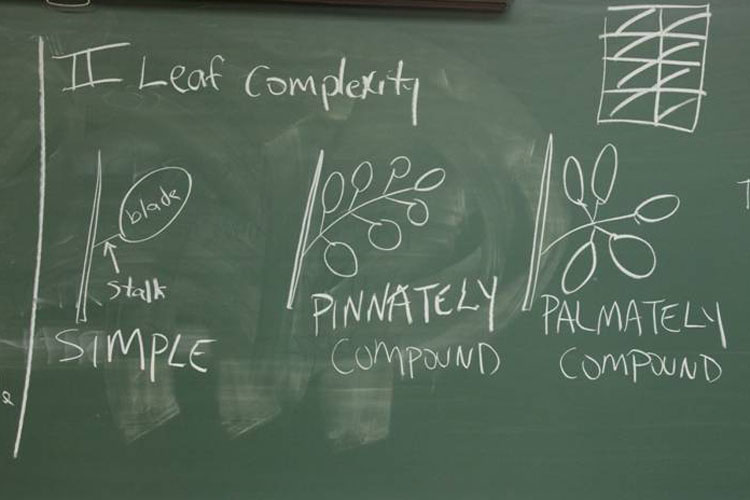TREE IDENTIFICATION FEATURES
Surprise! The principal characteristics used to distinguish trees are features of their leaves. Who knew? First and foremost, we have LEAF ARRANGEMENT, which tells us how many leaves are attached at each NODE (i.e., the point along the stem where leaves are attached).
Another leafy distinction has to do with whether or not the leaf consists of a single unbroken blade, or if instead it’s fully and completely divided into separate leaflets. The set of traits is called LEAF COMPLEXITY, and comes in two general types: undivided leaves are termed “simple,” and the divided ones, “compound.” Compound leaves can either be pinnate (leaflets arranged along the leafstalk), palmate (all attached at the same point), trifoliolate (like poison ivy) or twice compound (leaflets themselves divided into sub-leaflets).
12 TREES TO START OUT WITH
(scientific names link to species pages)
| Acer negundo L. | BOXELDER | Sapindaceae | native tree |
| Acer platanoides L. | NORWAY MAPLE | Sapindaceae | adventive tree |
| Acer rubrum L. | RED MAPLE | Sapindaceae | native tree |
| Acer saccharinum L. | SILVER MAPLE | Sapindaceae | native tree |
| Acer saccharum Marshall | SUGAR MAPLE | Sapindaceae | native tree |
| Aesculus glabra Willd. | OHIO BUCKEYE | Sapindaceae | native tree |
| Carya ovata (Miller) K. Koch | SHAGBARK HICKORY | Juglandaceae | native tree |
| Cercis canadensis L. | REDBUD | Fabaceae | native sm tree |
| Cornus florida L. | FLOWERING DOGWOOD | Cornaceae | native sm tree |
| Fraxinus pennsylvanica Marshall | GREEN ASH | Oleaceae | native tree |
| Juglans nigra L. | BLACK WALNUT | Juglandaceae | native tree |
| Quercus rubra L. | NORTHERN RED OAK | Fagaceae | native tree |


